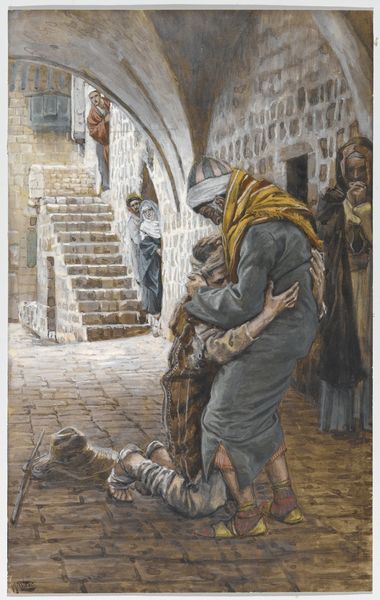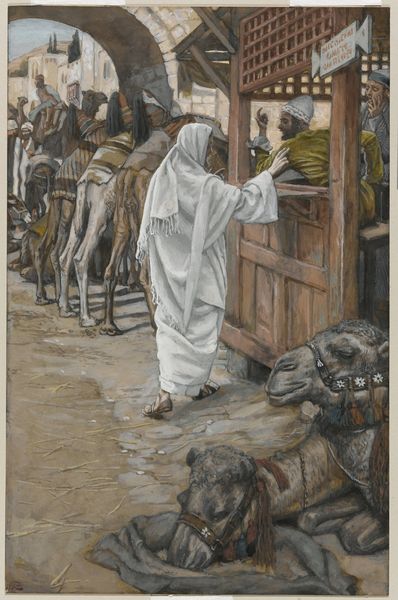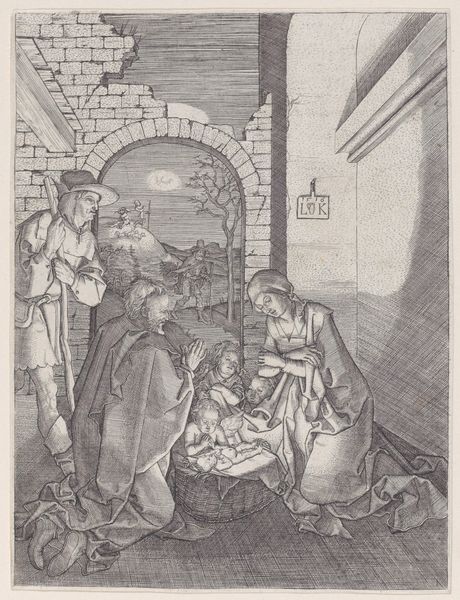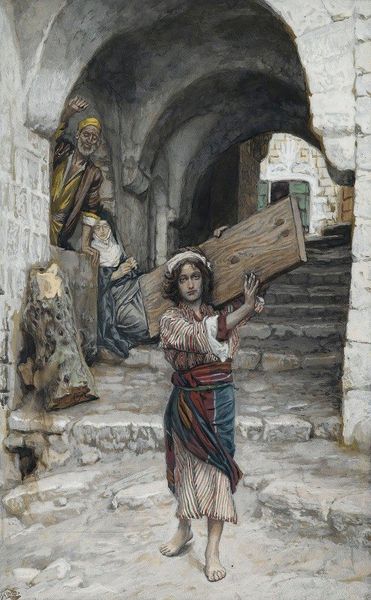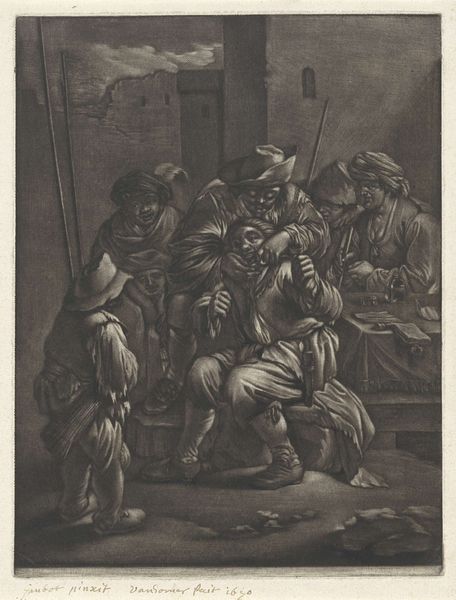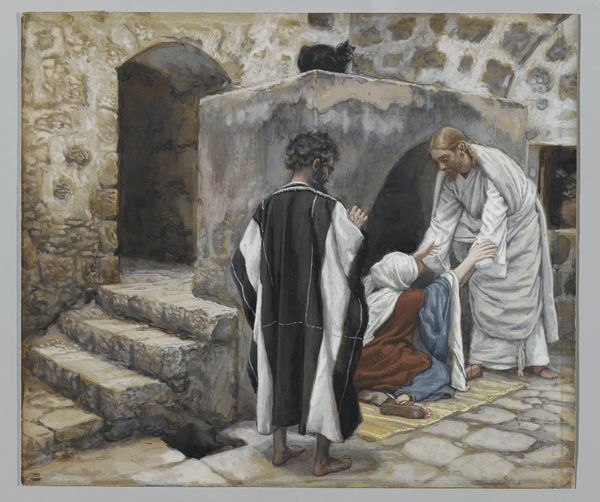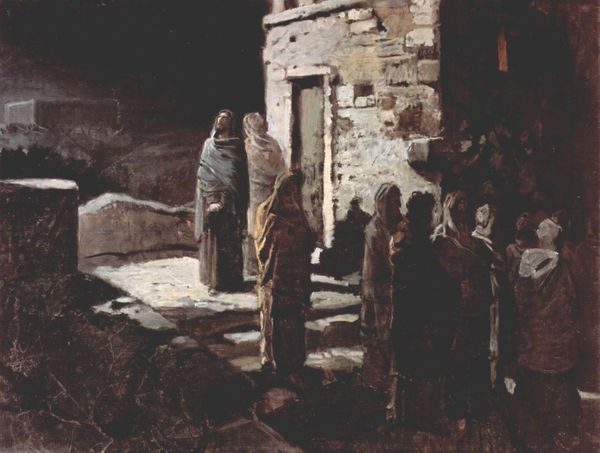
The First Denial of Saint Peter (Premier reniement de Saint Pierre )
0:00
0:00
#
charcoal drawing
#
possibly oil pastel
#
charcoal art
#
handmade artwork painting
#
oil painting
#
acrylic on canvas
#
underpainting
#
painting painterly
#
watercolour illustration
#
watercolor
Copyright: Public domain
Editor: We're looking at James Tissot's "The First Denial of Saint Peter," housed here at the Brooklyn Museum. It looks to be an oil painting, and I’m struck by the way light and shadow play across the figures. It's quite dramatic. What elements stand out to you? Curator: Considering Tissot’s piece, I find myself drawn to the materiality of the scene. Look closely at the building. The very stones seem to participate in this denial. Consider the socio-economic status of those who built that wall and how it impacts the reading of Saint Peter being confronted, denied not by powerful people but what look like regular people. What kind of relationship is evoked for the viewers with the materials themselves, given its spiritual theme? Editor: That’s an interesting point! I was focused on the narrative, but looking at it as you suggest makes me think about the cost of the setting in terms of labor to construct it. How does the setting reinforce the themes? Curator: Precisely! We see these figures interacting within an environment forged by human labor, and their interactions, including Peter's denial, are inescapably grounded in that physical reality. Are they complicit through their actions and passive actions? And is the architecture and constructed scene complicit through being part of the stage? This directs us away from solely spiritual interpretations to the consequences and conditions under which this story is produced. It highlights how faith, too, is entangled with tangible power dynamics. Editor: I never considered that. Shifting the focus from solely the figures to also examining the surrounding environment offers a whole new perspective. Curator: It invites questions about faith's entanglement with material circumstances. We are all enmeshed. Editor: I’ll definitely be looking at art with new eyes now. Thank you! Curator: A pleasure! Let's consider that further as we explore other works here.
Comments
No comments
Be the first to comment and join the conversation on the ultimate creative platform.

